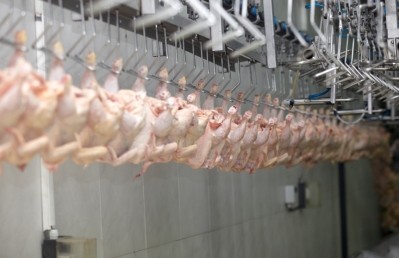Lockout/tagout standard is most cited OSHA violation

The National Institute for Occupational Safety and Health (NIOSH) National Occupational Research Agenda (NORA) Manufacturing Sector Council members want to help small food manufacturers with LO/TO.
It is seeking input from stakeholders to enhance understanding of issues surrounding LO/TO in the food and beverage processing industry.
Companies with established lockout programs have told the group that having written procedures allows for machine maintenance and service without delay.
LO/TO injuries
Many of the machine-related injuries are linked to failure to use LO/TO procedures.
Machine injuries related to lockout/tagout occur when an employee services or repairs a machine or tries to clear a jam but fails to de-energize it and lock out sources of energy.
Smaller businesses face the challenge of remaining competitive in the industry, and most are struggling to keep up with a bustling pace and narrow profit margins, said NIOSH.
The group said that pace equals profit but workers need to stay safe while maintaining speed.
Pace not a tradeoff for safety
“Pace does not have to be a tradeoff for safety; optimal levels of both can be achieved.
“If something falls off the assembly line and a machine gets jammed, a quick solution may seem like a good option. Given the production pressures in this industry, workers may feel that managers would rather have them risk injury than stop production to properly apply LO/TO procedures.”
A worker may try to clear the jam without taking the time to lock out sources of hazardous energy.
“But when energy sources are not locked out, any unexpected startup of a machine or other equipment can result in amputations or death.
“Employers who ‘get it’ know that it is far more valuable to control hazardous energy with LO/TO procedures than to risk both the personal and financial loss that can result from machine-related injury. An injury, death, or even a fine from a violation can quickly nullify gains from increased work speed.”
An examination of the US Department of Labor’s Occupational Safety and Health Administration’s (OSHA) Accident Investigation database showed that from 2003-2013, 28 fatalities and 227 serious injuries (such as amputations) were related to lockout procedures in food manufacturing.
The largest number of incidents occurred in meat packing and poultry slaughtering and processing.
Workers in food manufacturing have a higher rate of injuries and illnesses than workers in private industry.
Injury and illness rate was 5.4 per 100 workers compared with 3.4 per 100 workers for private industry overall in 2012, according to the Bureau of Labor Statistics.
The rate for 2012 continues the declines that, with the exception of 2011, occurred annually for the last decade.
Food manufacturers suffered 18,620 lost-time injuries and 41 fatalities and estimated cost for those lost-time injuries was over $1.4bn (direct and indirect costs, at an average $76,000 each).
NIOSH recommendations for lockout and tagout can be found here.
Source: NIOSH Science Blog
“A Wrench in the Gear: Lockout/tagout in the food industry”
Authors: Jim Harris, Susan Afanuh, Frank Renshaw, David L. Parker, Theodore Braun, Thomas Cunningham


























